Ancient Chinese Ingenuity Created Sophisticated Time Keeping Machines: Proof Of Remarkable Ancient Knowledge
A. Sutherland - AncientPages.com - In 727, the world's first mechanical clock was constructed by the Chinese Tantric Buddhist monk and mathematician Yixing (683-727). It was also an astronomical instrument.
The Chinese invention of a mechanical clock that is considered to be the 'most venerable of all escapement clocks', predates the European mechanical clock by several centuries.
It's worth mentioning that an escapement is the crucial component of a mechanical clock, that regulates the driving force of the timepiece and allows a rotating wheel to turn slowly, continuously, and with constant speed.
Left: The original diagram of Su's book showing the inner workings of his clocktower. Credit: Public Domain. Right: A scale model of Su Song's astronomical clock tower. Credit: Public Domain
Today no one doubts that the invention of the mechanical clock was one of the greatest scientific and technological achievements.
The clock is described in Robert Temple's very interesting book The Genius of China: 3,000 Years of Science, Discovery, and Invention as follows:
"[It] was made in the image of the round heavens and on it were shown the lunar mansions in their order, the equator and the degrees of the heavenly circumference.
Water, flowing into scoops, turned a wheel automatically, rotating it one complete revolution in one day and night [24 hours].
Besides this, there were two rings fitted around the celestial sphere outside, having the sun and moon threaded on them, and these were made to move in circling orbit... And they made a wooden casing the surface of which represented the horizon, since the instrument was half sunk in it.
Credit: Robert Temple
It permitted the exact determinations of the time of dawns and dusks, full and new moons, tarrying and hurrying. Moreover, there were two wooden jacks standing on the horizon surface, having one a bell and the other a drum in front of it, the bell being struck automatically to indicate the hours, and the drum being beaten automatically to indicate the quarters.
All these motions were brought about by machinery within the casing, each depending on wheels and shafts, hooks, pins and interlocking rods, stopping devices and locks checking mutually [i.e. the escapement]".
Yixing's clock was, like water clocks, subject to the vicissitudes of the weather. In order to keep the water in them from freezing, torches generally burnt beside them.
See also:
Highly Advanced Robots In Ancient China
The Lycurgus Cup: Fascinating Artifact That Reveals Prehistoric Knowledge Of Nanotechnology
Ancient Sophisticated Technologies: Mercury-Based Gilding That We Still Can’t Reach
Merkhet – An Ancient Egyptian Timekeeping Instrument
Therefore, in the next great and far more complex clock of which we have accounts in China, mercury was substituted for water because of the freezing problem, and one of the best examples is a much larger clock built by Zhang Sixun in 976 AD and described in this way:
"... a tower of three storeys each over 3 metres in height, within which was concealed all the machinery. It was round at the top to symbolize the heavens and square at the bottom to symbolize the earth. Below there was set up the lower wheel, lower shaft, and the framework base.
There were also horizontal wheels, vertical wheels fixed sideways, and slanting wheels; bearings for fixing them in place; a central stopping device and a smaller stopping device [i.e. the escapement] with a main transmission shaft. Seven jacks rang bells on the left, struck a large bell on the right and beat a drum in the middle to indicate clearly the passing of the quarter-hours.
Water-powered armillary and celestial tower. Credit: Natural Museum of National Science Taiwan
Each day and night [i.e. each 24 hours] the machinery made one complete revolution, and the seven luminaries moved their positions around the ecliptic. Twelve other wooden jacks were also made to come out at each of the doublehours, one after the other, bearing tablets indicating the time..."
And so it was time for the "Cosmic Engine", the greatest of all Chinese medieval clocks built by the astronomer Su Song in 1092. This device was an astronomical clock tower more than 10 metres high, like the previous one of Zhang.
Su Song's tower was additionally equipped with a huge bronze power-driven astronomical instrument called an armillary sphere, with which one could observe the positions of the stars.
A celestial globe inside the tower - that could always demonstrate planetarium - turned in synchronization with this sphere above, so that the two could constantly be compared. We are told that the observations made on the demonstrational globe inside and by the observational sphere above "agreed like the two halves of a tally".
On the front of the tower was a pagoda structure of five storeys, each having a door through which mannikins and jacks appeared ringing bells and gongs and holding tablets to indicate the hours and other special times of the day and night. All of these time-indicators were operated by the same giant clock machinery which simultaneously turned the sphere and the globe.
Knowledge of the principles of Su Song's clock spreading to Europe led to the development of mechanical clocks in the West two centuries later.
Written by – A. Sutherland - AncientPages.com Senior Staff Writer
Copyright © AncientPages.com All rights reserved. This material may not be published, broadcast, rewritten or redistributed in whole or part without the express written permission of AncientPages.com
Expand for referencesMore From Ancient Pages
-
 Andalusia Was First Inhabited By Neolithic People From The Southern Part Of The Iberian Peninsula 6,200 Years Ago
Archaeology | Feb 26, 2024
Andalusia Was First Inhabited By Neolithic People From The Southern Part Of The Iberian Peninsula 6,200 Years Ago
Archaeology | Feb 26, 2024 -
 Height Differences Among Neolithic People Was Caused By Environmental Stress Not Genetics
DNA | Dec 13, 2023
Height Differences Among Neolithic People Was Caused By Environmental Stress Not Genetics
DNA | Dec 13, 2023 -
 Strange Ancient Artifacts And Foreigners Who Were Not Meant To Be In North America
Artifacts | Mar 16, 2020
Strange Ancient Artifacts And Foreigners Who Were Not Meant To Be In North America
Artifacts | Mar 16, 2020 -
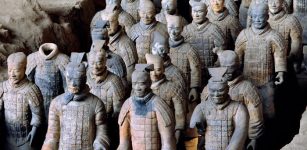 On This Day In History: Terracotta Army Buried With Emperor Qin Shi Huang Discovered – On Mar 29, 1974
News | Mar 29, 2017
On This Day In History: Terracotta Army Buried With Emperor Qin Shi Huang Discovered – On Mar 29, 1974
News | Mar 29, 2017 -
 ‘Collata Quipu’ May Explain Messages Hidden In Mysterious Writing Of Inca
Archaeology | May 10, 2017
‘Collata Quipu’ May Explain Messages Hidden In Mysterious Writing Of Inca
Archaeology | May 10, 2017 -
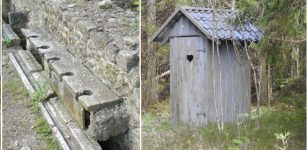 How Did People Go To The Toilet In The Past Before The Invention Of The Flush Toilet?
Archaeology | Jun 10, 2023
How Did People Go To The Toilet In The Past Before The Invention Of The Flush Toilet?
Archaeology | Jun 10, 2023 -
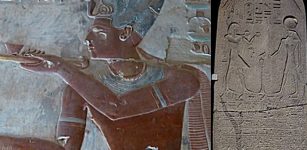 Egyptian King Seti I Documented His 3300-Year-Old Accomplishment On Triumphal Stele
Archaeology | Feb 27, 2023
Egyptian King Seti I Documented His 3300-Year-Old Accomplishment On Triumphal Stele
Archaeology | Feb 27, 2023 -
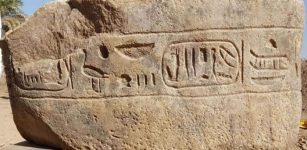 Royal Colossi Fragments, Mud Brick Wall And Pottery Uncovered In Matariya, Egypt
Archaeology | Dec 4, 2019
Royal Colossi Fragments, Mud Brick Wall And Pottery Uncovered In Matariya, Egypt
Archaeology | Dec 4, 2019 -
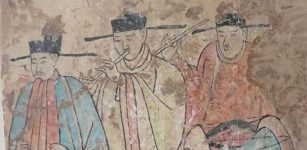 Ancient Fresco Tomb Dated A 1000-Years Ago Was Accidentally Discovered In Northern China
Archaeology | May 5, 2020
Ancient Fresco Tomb Dated A 1000-Years Ago Was Accidentally Discovered In Northern China
Archaeology | May 5, 2020 -
 Strange Encounter With A Dead Medieval Army In Normandy – Or Were They Visitors From A Parallel World?
Featured Stories | Nov 5, 2017
Strange Encounter With A Dead Medieval Army In Normandy – Or Were They Visitors From A Parallel World?
Featured Stories | Nov 5, 2017 -
 Goibniu: The Sword Smith Of Tuatha De Danann Who Forged Weapons For Battles In Celtic Mythology
Celtic Mythology | Jan 31, 2020
Goibniu: The Sword Smith Of Tuatha De Danann Who Forged Weapons For Battles In Celtic Mythology
Celtic Mythology | Jan 31, 2020 -
 Eastern Necropolis Of Ancient Thracian And Roman City Of Serdica – Unearthed
Archaeology | Apr 10, 2017
Eastern Necropolis Of Ancient Thracian And Roman City Of Serdica – Unearthed
Archaeology | Apr 10, 2017 -
 Zagros Mountains: Home To Tribes, Kingdoms And Empires For Thousands Of Years
Civilizations | Sep 16, 2020
Zagros Mountains: Home To Tribes, Kingdoms And Empires For Thousands Of Years
Civilizations | Sep 16, 2020 -
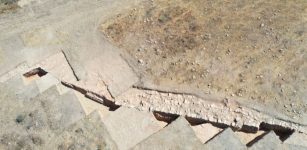 Hidden Mega-Monument Discovered At Laona, An Ancient Burial Mound In Cyprus
Archaeology | Aug 15, 2022
Hidden Mega-Monument Discovered At Laona, An Ancient Burial Mound In Cyprus
Archaeology | Aug 15, 2022 -
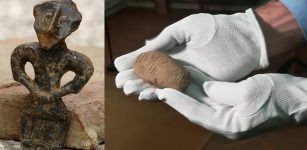 7,000-Year-Old Inscription With Undeciphered Vinca Script – One Of The World’s Earliest Writing Systems Discovered
Archaeology | Feb 17, 2018
7,000-Year-Old Inscription With Undeciphered Vinca Script – One Of The World’s Earliest Writing Systems Discovered
Archaeology | Feb 17, 2018 -
 ‘Masters Of The Desert’ – Hohokam People, Massive Caliche Structures And Sophisticated Extensive Irrigation Canals
Civilizations | May 31, 2016
‘Masters Of The Desert’ – Hohokam People, Massive Caliche Structures And Sophisticated Extensive Irrigation Canals
Civilizations | May 31, 2016 -
 Rare Gold Foils Found In Ancient Egyptian Tombs At Tel El-Deir In New Damietta
Archaeology | Jul 24, 2024
Rare Gold Foils Found In Ancient Egyptian Tombs At Tel El-Deir In New Damietta
Archaeology | Jul 24, 2024 -
 Earliest Evidence For Domestic Yak – Revealed By Ancient DNA And Archaeology
Archaeology | Dec 15, 2023
Earliest Evidence For Domestic Yak – Revealed By Ancient DNA And Archaeology
Archaeology | Dec 15, 2023 -
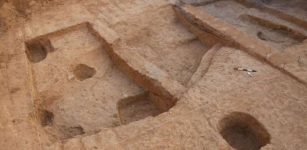 6,500-Year-Old Copper Workshop Unearthed In Negev Desert
Archaeology | Oct 6, 2020
6,500-Year-Old Copper Workshop Unearthed In Negev Desert
Archaeology | Oct 6, 2020 -
 Has The Mystery Of The Secret Sarcophagus Found At Notre-Dame Cathedral Been Solved?
Archaeology | Sep 25, 2024
Has The Mystery Of The Secret Sarcophagus Found At Notre-Dame Cathedral Been Solved?
Archaeology | Sep 25, 2024



